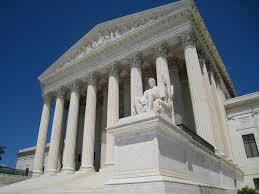Back in black: U.S. Supreme Court returns from COVID-19 telework
The court building has been closed to the public since March 2020 due to the pandemic, with the justices hearing oral arguments via teleconference. In a sign of how planning during the pandemic is constantly in flux, preparations for the new term were disrupted on Friday when Justice Brett Kavanaugh tested positive for the coronavirus, although the court said he had no COVID-19 symptoms.

- Country:
- United States
U.S. Supreme Court justices are set to don their black robes and sit once more behind a mahogany bench in their grand courtroom on Monday as they resume in-person oral arguments for the first time since COVID-19 pandemic disruptions started last year.
In a tentative step toward normalcy, the nine justices will be joined by lawyers, court staff, and journalists in their spacious column-lined courtroom as they begin their new nine-month term. No members of the public will be present. The court building has been closed to the public since March 2020 due to the pandemic, with the justices hearing oral arguments via teleconference.
In a sign of how planning during the pandemic is constantly in flux, preparations for the new term were disrupted on Friday when Justice Brett Kavanaugh tested positive for the coronavirus, although the court said he had no COVID-19 symptoms. Kavanaugh will participate remotely on Monday, the court said. Written guidance for lawyers requires them to be tested for the coronavirus but there is no vaccine requirement.
The pandemic has forced some changes upon the tradition-bound court. Live audio of oral arguments, a practice the court had rejected until the pandemic made it a necessity in May 2020, is set to continue in the new term. The oral argument format also has been tweaked to allow for a lightning round of questions by each justice, a holdover from how the court conducted teleconference arguments.
The teleconference arguments were more structured than the traditional rough-and-tumble approach in which justices competed with each other to get a word in. Justice Clarence Thomas, who famously almost never spoke during in-person oral arguments, posed queries regularly during teleconference arguments. The court, which has a 6-3 conservative majority, returns to action at a time when it is coming under close scrutiny after the justices on Sept. 1 allowed a restrictive Texas law that bans abortion after six weeks of pregnancy to go into effect.
Among the cases the justices are due to hear during their new term is a major challenge to abortion rights involving Mississippi's bid to revive a Republican-backed state law that bans the procedure after 15 weeks of pregnancy. Mississippi has asked the court to overturn the 1973 Roe v. Wade ruling that legalized abortion nationwide. They also are set to hear a challenge backed by the National Rifle Association to New York state's restrictions on people carrying concealed handguns in public in a case that could further undermine firearms control efforts nationally.
The court hears arguments in two cases on Monday, one a criminal case involving a man convicted of being a felon in possession of a firearm and the other a dispute between two states, Mississippi and Tennessee, over water rights. The court's term runs through the end of next June.
All nine justices, three of whom are over age 70, have been vaccinated against COVID-19, which has proven to be particularly dangerous among the elderly.
(This story has not been edited by Devdiscourse staff and is auto-generated from a syndicated feed.)










